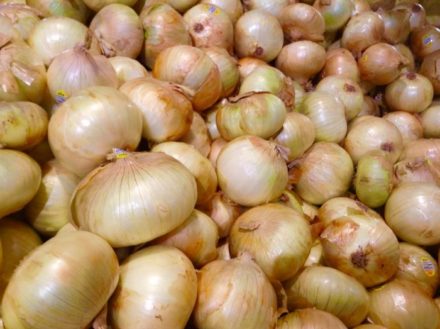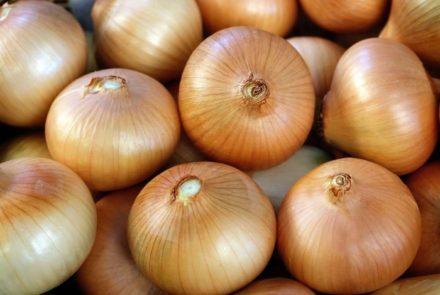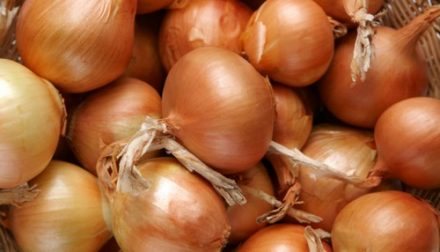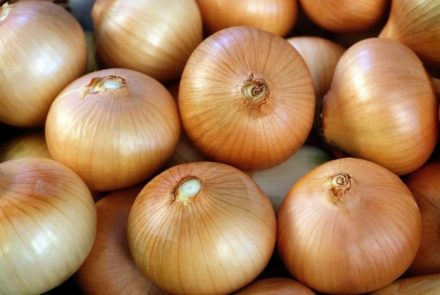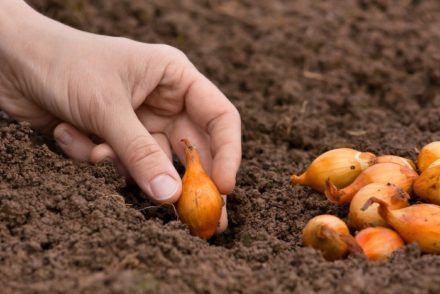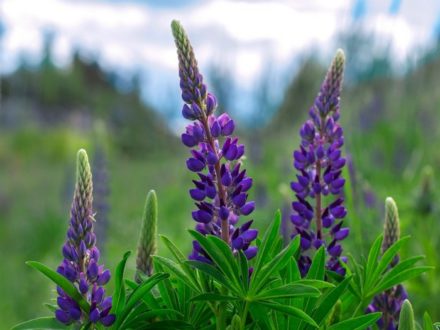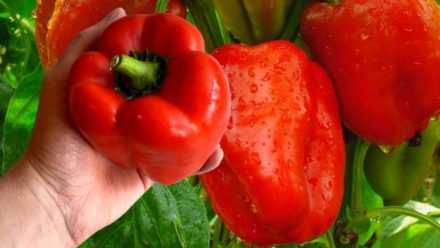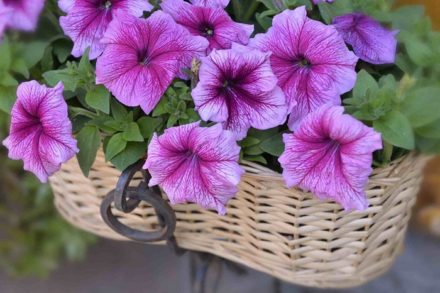“Exhibition” onion is a famous variety, famous for the huge size of the turnip. It can be grown from seeds, bypassing the sowing stage, in one season. To ensure that the bulbs have time to ripen, seedling planting technology is used. When growing seedlings, it is recommended to follow several rules, then the harvest will not fail.
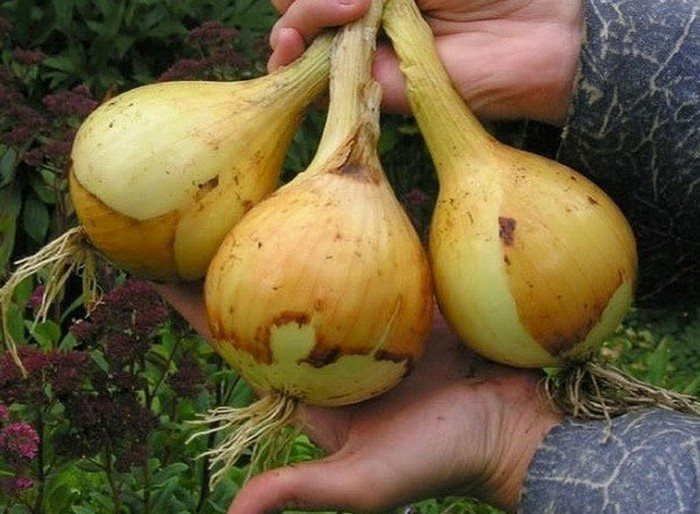
Suitable dates for sowing
When planting onions with seeds, the sowing time must be adjusted so that at the age of two months the seedlings are in the garden. The exact date is determined by the region in which the Exhibition variety will grow:
- in the south of Russia – February;
- in the middle zone - late February - early March;
- in Siberia and the Urals - the second half of March.
You also need to take into account the weather in the current season, because spring can be either early or late. Therefore, it is better to study the forecast for the coming months in advance.
If you sow ahead of schedule, the seedlings will outgrow. In case of late sowing, by the time of planting in the garden, the seedlings will be too small, and the growing season of the vegetable will be delayed. Those who follow the recommendations of the lunar calendar already know that onions are planted on the waning moon. You can correlate the planting date with these days of the lunar cycle.
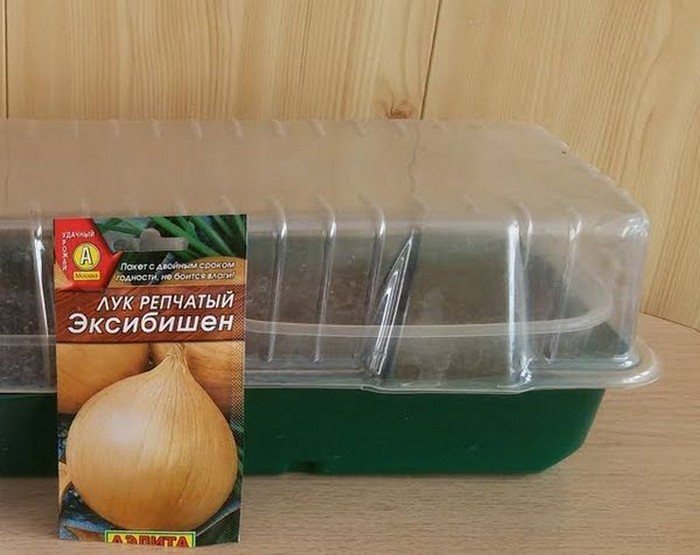
Selection of soil and container
The easiest way to plant onions is to buy universal soil. Such soil has the necessary looseness and nutritional value, and has a neutral acid-base reaction.Before sale, the soil undergoes the necessary preparation; it does not need to be disinfected.
Harvesting soil from the garden will bring more trouble. Usually the soil is prepared in the fall. Additives in the form of perlite, vermiculite, sand, and peat will help make the soil looser. The soil must be brought into the house a couple of weeks before sowing and disinfected in any way (over steam, in the oven or in the microwave). The remaining time before sowing is necessary to restore soil microflora.
The seeds are planted in a common container; it should be wide and low. These can be cassettes, a plastic container, a wooden box. Before planting, the container is rinsed with a solution of potassium permanganate and several drainage holes are made in its bottom. You can sow directly into separate cups or peat pots to avoid picking.
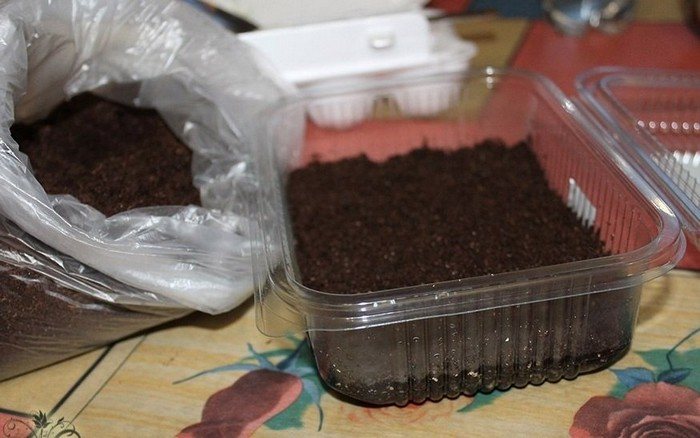
Seed preparation
Onion seeds are called nigella because of the black color of the shell. Their surface is very hard. Before sowing, the seeds are germinated by wrapping them in a damp cloth or placing them between two cotton pads. The material is placed on a small saucer, sprayed with water and covered with plastic wrap.
The condition of the nigella is checked daily and a little water is added if necessary. Germination is carried out warmly (at temperatures above 24 °C). As soon as the sprouts appear, the onions can be planted in the ground. The process usually takes 2-4 days. This rule does not apply to coated and granulated seeds; they are sown without prior preparation.
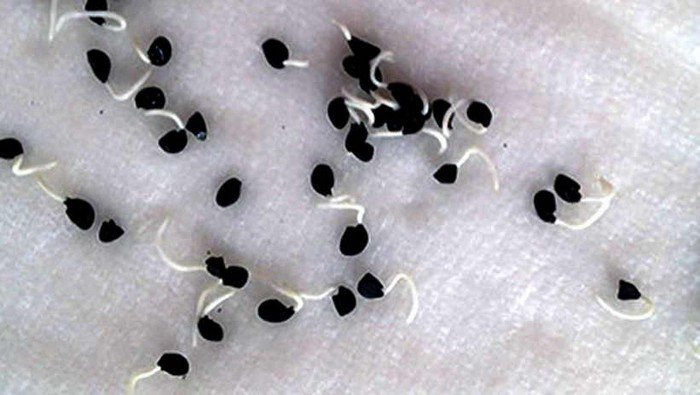
Features of sowing
Onions do not like stagnant water. A drainage layer of expanded clay 1.5-2 cm high must be placed at the bottom of the planting container.Pre-prepared soil is laid on top. At the time of planting, the soil should be slightly damp. Then proceed according to the following scheme:
- Using a pencil, make grooves 1-1.5 cm deep.
- An interval of 4 cm is maintained between rows.
- Seeds are placed in the grooves at intervals of 3-4 cm.
- The crops are sprinkled with dry soil and then sprayed with a spray bottle.
Until the shoots appear, the seedlings are kept under film, creating greenhouse conditions. The container must be kept warm.
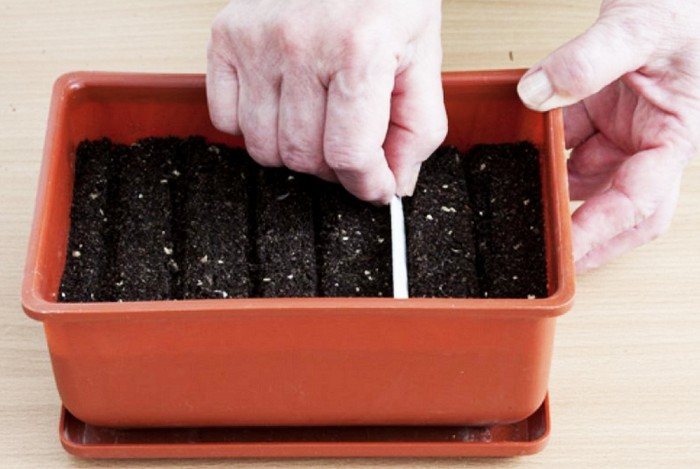
Seedling care
Until the shoots appear, the crops must be ventilated, briefly removing the film every day. When the sprouts turn green, the shelter can be removed completely. The soil should not be allowed to dry out. At first, the soil is moistened with a sprayer. It is convenient to water small seedlings using a syringe or medical syringe. The water should be at room temperature.
The watering regime is selected so as to maintain balance. Underwatering and overwatering are equally detrimental to plants. At the initial stage of seedling growth, the temperature regime is changed, moving the seedlings to a cooler place (12 °C at night and 17 °C during the day). After a week, the temperature is increased by 3-4 degrees.
In winter, seedlings need to be illuminated and the lights should be turned on for a couple of hours in the morning and evening. Due to lack of light, the bow may stretch. From mid-March, the plants will have enough natural light. At the age of 40-45 days, the seedlings dive into separate cups, helping themselves with a teaspoon.
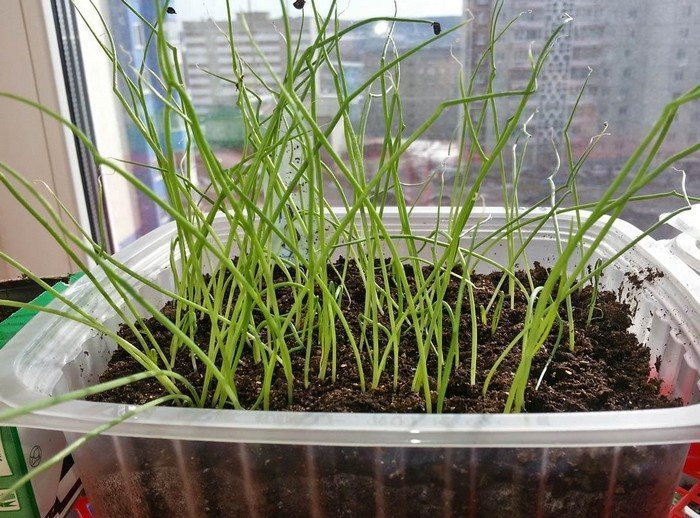
Before planting in the ground, Exhibition onions are hardened for 10 days. First, open the window slightly, and then take the seedlings out into the fresh air. A week before planting, the ends of the onions are trimmed, leaving no more than 10 cm. Thanks to this technique, the seedlings will take root faster.The interval between seedlings on the ridge should be at least 25-30 cm. Further care comes down to watering, fertilizing, weeding and loosening the soil.



